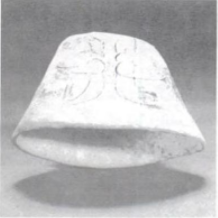taoling overview
 Tao bell (pinyin: Táo líng), an ancient percussive body-sounding instrument, is a kind of musical instrument that combines the two parts of the impact sound and makes it sound through external force.
Tao bell (pinyin: Táo líng), an ancient percussive body-sounding instrument, is a kind of musical instrument that combines the two parts of the impact sound and makes it sound through external force.A painted pottery bell about 4,800 years ago was unearthed at the Qijiaji site in Guanghe County, Gansu Province. The bell is in the shape of a gourd, with a crank handle, a bulging belly, a flat bottom, and a rhombus grid pattern and arc pattern black color.
A 4,500-year-old pottery bell unearthed from the Shijiahe Cultural Site in Tianmen is oblate, with a height of 5.4 cm and a diameter of 7-9.8 cm. Both sides of the bell are inscribed with animal face patterns. A pottery bell unearthed in Chenjiahe Old Village, Maping Village, Dashi Township, Gangu County, Gansu Province, is 5 cm high and 10 cm in diameter. decorative pattern. Flat-shaped, with a small ceramic ball inside, it can make a crisp sound when shaken. It seems to be a toy or sacrificial instrument for children in the Qijia culture period, or it can be regarded as an ancient percussion instrument.
In addition, pottery bells of various shapes have been unearthed from the Sanfangwan Site of Shijiahe in Tianmen County, Hubei Province, the Dahe Village Site in Zhengzhou, Henan Province, and the Longshan Cultural Site in central Shandong.
- Pinyin:Táo líng
- material:Pottery
- type:body music
reference materials and contributors
- 陶铃 · 百度百科
- 《以考古成果诠释中华文明史之原始乐器—陶埙、陶铃、陶钟、 · 个人图书馆
overview of other similar instruments
- sanyanxiao overview
- Daguangxian overview
- Leiqin overview
- hahao overview
- yandundagu overview
- Han Xiaozheng overview
- Fang Xiang overview
- guanzi overview
- zhuqin (Dao Qin) overview
- zhuiqin overview
- bangzi overview
- three-stringed piano overview
- Gehu overview
- xiao overview
- xiaokonghou overview
- Konghou overview
- Sheng overview
- suona overview
- hulusi overview
- gushao overview
 渝公网安备 50010702504639号
渝公网安备 50010702504639号